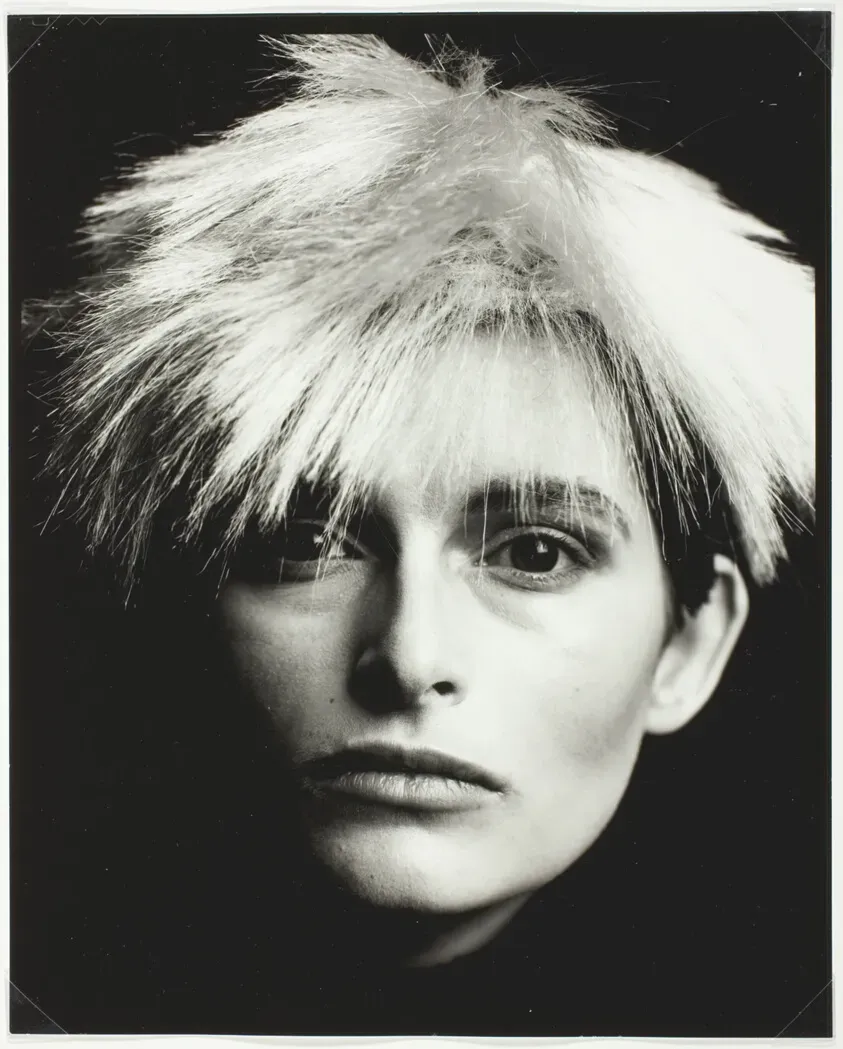Table of Contents
Step outside on a bright day, and the world shifts. Sunlight can be beautiful, sure, but it can also be blinding, washing out detail and making you squint. That's where sunglasses come in, not just as a fashion statement, but as essential gear for clear, comfortable vision. But wander into a store or browse online, and you're hit with a rainbow of options. Brown, gray, green, yellow, rose – do these sunglass lens colors actually do anything different? Or is it just about matching your outfit?
Why Sunglass Lens Colors Matter Beyond Just Style
Why Sunglass Lens Colors Matter Beyond Just Style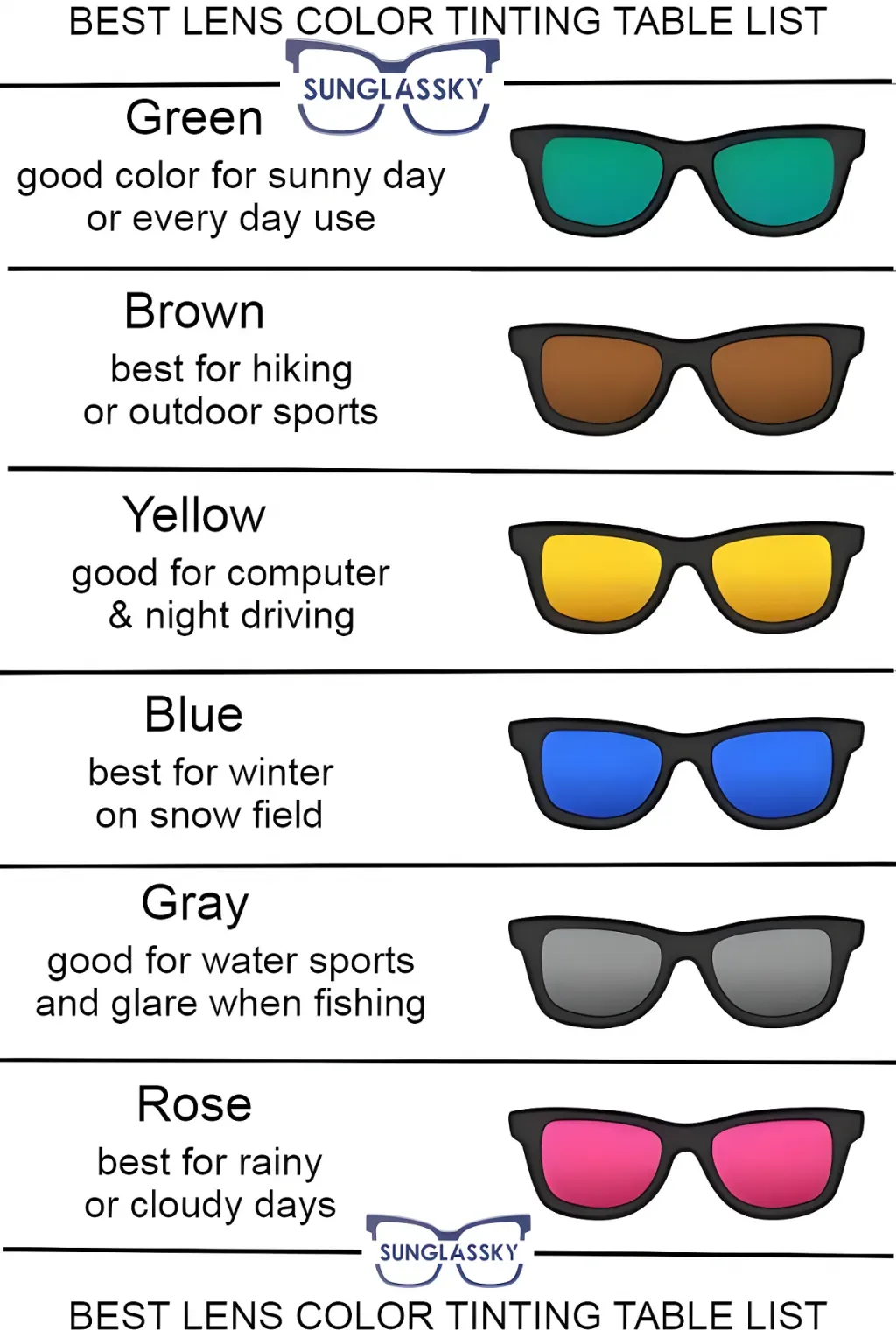
so you might think picking sunglass lens colors is like choosing paint for your walls – purely about what looks good. And yeah, style is a piece of it, nobody wants to wear something they hate. But honestly, that's just the tip of the iceberg when you consider why sunglass lens colors matter beyond just style. These tints aren't random; they’re engineered to interact with light in specific ways, which directly impacts how you see the world. Think about it: the sun throws a lot of different light frequencies at us. Some tints block certain colors, others enhance contrast, and some just dim everything down evenly. Choosing the right one can mean the difference between squinting through a hazy glare and seeing everything with crisp, clear detail, reducing eye fatigue and making activities safer and more enjoyable.
Common Sunglass Lens Colors and What They Do
Common Sunglass Lens Colors and What They Do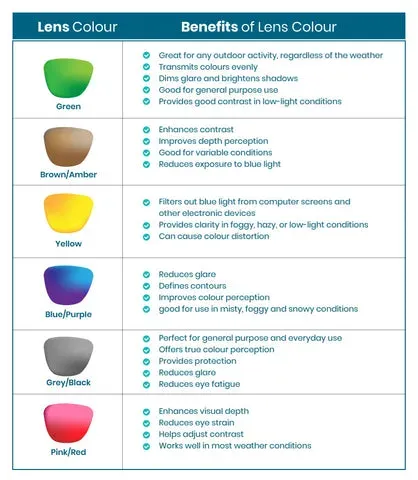
The Go-To Neutrals: Gray and Brown Lens Colors
so let's dive into the actual sunglass lens colors you see everywhere. The most common players are usually gray and brown. Think of gray as the old reliable friend. It's fantastic because it dims brightness across the board without messing with how you see colors. What you see through a gray lens is pretty much exactly what you see without sunglasses, just darker and more comfortable in bright light. This makes it super versatile for general wear, driving, or just hanging out on a sunny day. No weird color shifts, just less glare.
Brown lenses are a bit different. They tend to enhance contrast and depth perception, especially in variable light conditions or when it's a bit hazy or cloudy. They block more blue light than gray lenses, which can make things look sharper and brighter, like turning up the vibrancy on a photo. Some people find brown tints make the world feel warmer, which can be nice. They're often a good choice for driving, cycling, or fishing where seeing contours and details is important.
Boosting Contrast: Green, Yellow, and Rose Tints
Moving on to some tints that do a bit more work for you. Green lenses are another solid all-around option, kind of a mix between gray and brown. They reduce glare and brighten shadows while still allowing colors to come through relatively naturally. They offer good contrast and are comfortable for long wear. Pilots used to favor green lenses because they helped with visibility in different conditions without distorting the instrument panel colors. Pretty practical, right?
Then you have the tints that really boost contrast, like yellow, gold, amber, and rose or red. Yellow and amber are awesome for low-light conditions, fog, or haze because they filter out blue light, making everything look brighter and increasing contrast dramatically. Think skiing on a cloudy day or cycling at dusk. Rose or red tints also boost contrast and can make the environment seem more vibrant. They're often popular for snow sports or just adding a cheerful filter to the world. They can be intense though, so maybe not your pick for a super bright beach day.
- Gray: Reduces overall brightness, true color perception, good for general use.
- Brown/Amber: Enhances contrast and depth, filters blue light, good for variable light and driving.
- Green: Reduces glare, brightens shadows, balanced color perception, versatile.
- Yellow/Gold: Excellent for low light/haze, boosts contrast dramatically.
- Rose/Red: Increases contrast, enhances visibility in snowy conditions, can feel vibrant.
Matching Sunglass Lens Colors to Activities and Conditions
Matching Sunglass Lens Colors to Activities and Conditions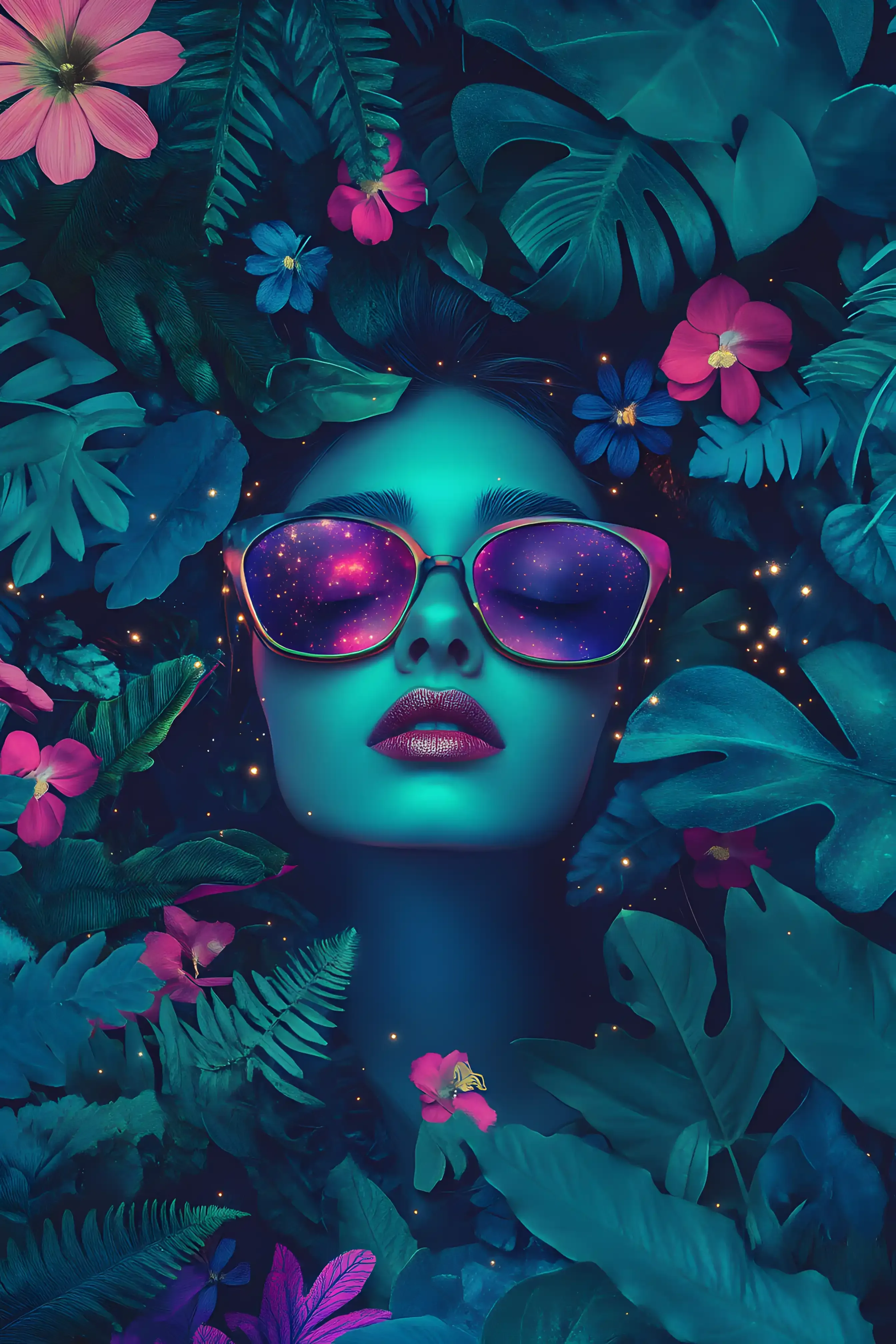
Picking Tints for the Road and the Water
Alright, let's get practical. You've got the basics of sunglass lens colors down, but when do you actually *use* them? If you're spending time on the road, especially driving, glare is the enemy. It hides potholes, makes traffic lights look fuzzy, and generally makes everything harder. Gray lenses are a solid, no-nonsense choice here because they dim the light evenly, which is crucial for seeing true traffic signal colors. Brown or amber tints can also work well, boosting contrast and making it easier to spot things on the road, but be aware they can slightly alter color perception, which takes a little getting used to.
Water activities are a whole different beast. Glare off the water is intense, bouncing light right into your eyes. This is where polarized lenses are king, but the tint still matters. Gray is again a good neutral choice, keeping colors natural. Brown or copper can enhance contrast, helping you see below the surface a bit better or spot obstacles. Just remember, if you're looking at digital screens (like on a boat's GPS or your phone), polarization can sometimes make them look weird or black out entirely. Something to consider before you set sail.
Choosing Lens Colors for Snow and Low Light
Hitting the slopes or trails? Snow sports mean dealing with bright sun reflecting off white snow (double glare, fun!) and also potential flat light conditions where everything looks washed out. Rose or red tints are often recommended for snow because they enhance contrast significantly, helping you distinguish bumps and dips in the snow even when the light isn't great. Yellow or amber lenses are fantastic for overcast days, fog, or twilight – situations where you need to boost brightness and definition. They filter out blue light, making things pop, though they do make everything look, well, yellow.
For cycling, running, or hiking in varied conditions, you might encounter bright sun, shade, and changing weather. Brown or green lenses offer good versatility, providing decent glare reduction and contrast enhancement without being too specialized. Some serious outdoor enthusiasts even carry multiple pairs or lenses to swap out depending on the conditions they expect. Sounds excessive? Maybe, but try hitting a shaded patch on a trail after being in bright sun with the wrong tint – you'll change your mind fast.
Activity/Condition | Recommended Sunglass Lens Colors | Why It Works |
|---|---|---|
General Sunny Conditions | Gray, Green | Neutral color perception, reduces overall brightness. |
Driving | Gray, Brown/Amber (Polarized often preferred) | Reduces glare, enhances contrast (Brown/Amber). |
Water Sports (Boating, Fishing) | Gray, Brown/Copper (Polarized essential) | Cuts intense glare, enhances contrast below surface (Brown/Copper). |
Snow Sports | Rose/Red, Yellow/Amber | Boosts contrast in bright and flat light conditions. |
Low Light, Fog, Haze | Yellow/Amber | Filters blue light, dramatically increases brightness and contrast. |
More Than Just Color: Polarization, Mirrors, and UV Protection
More Than Just Color: Polarization, Mirrors, and UV Protection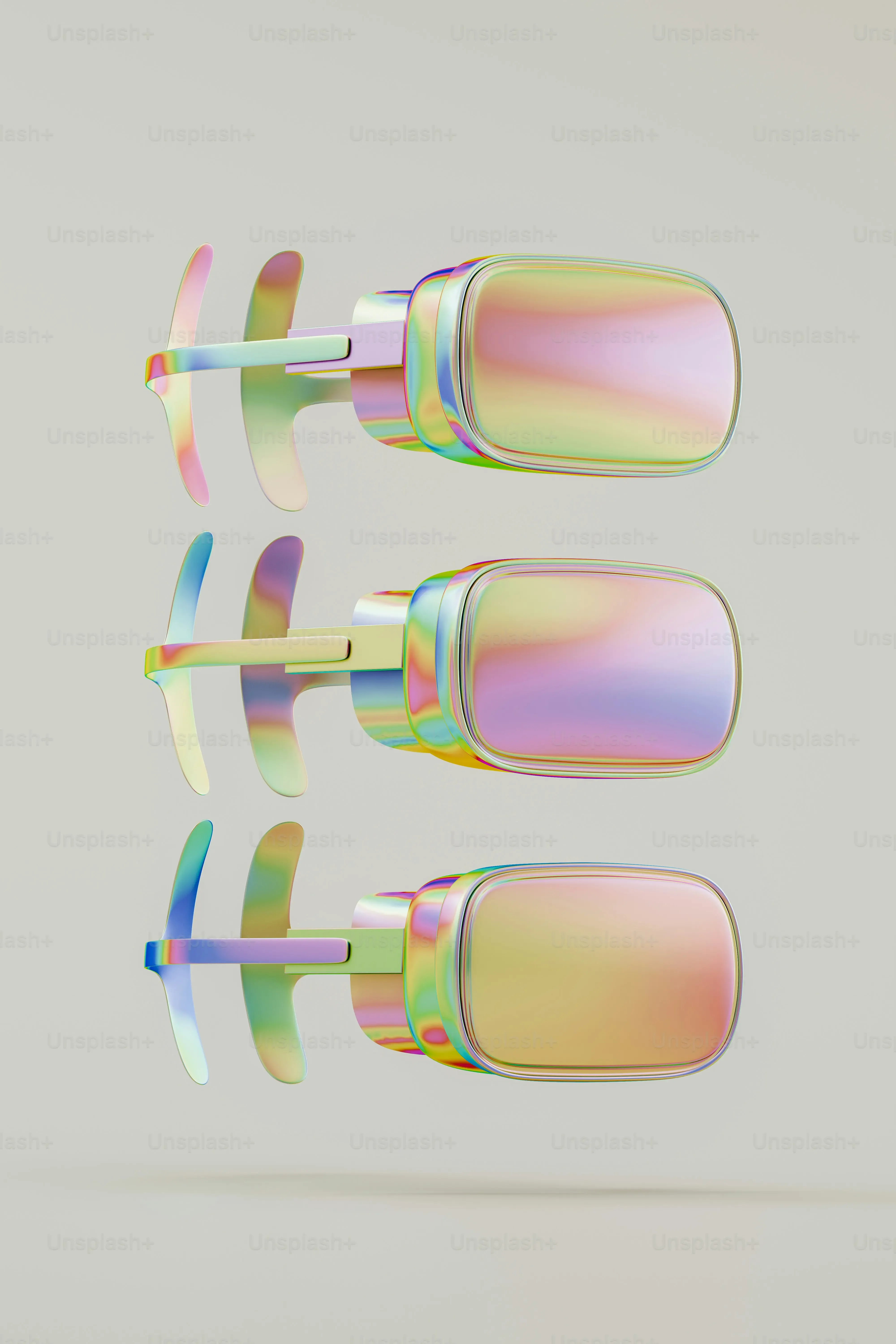
The Glare Killer: Understanding Polarization
So you've thought about the tint, but there's another big player: polarization. This isn't about making things darker; it's about killing glare. Think of light waves bouncing off flat surfaces like water, snow, or roads. They tend to bounce back horizontally, creating that blinding glare that makes you squint even with dark lenses. Polarized lenses have a special filter that blocks these horizontal waves. It's like magic for your eyes, making everything look smoother and clearer. If you're near water, driving into a sunset, or skiing, polarization is a game-changer. You'll see fish in the water, pavement details, and snow contours you'd miss otherwise. It's not just comfort; it's a significant safety boost.
Adding a Shield: Mirror and Flash Coatings
Beyond polarization and tint, you'll often see lenses with shiny, reflective coatings. These are mirror or flash coatings. They don't change the color you see through the lens much, but they add an extra layer that reflects even more light away from your eyes. The more reflective the coating, the more light it bounces off. This is particularly useful in extremely bright conditions, like high altitudes, on water, or in snow, where the sun's intensity is amplified. Plus, let's be honest, they look pretty cool and add a layer of privacy – nobody can see your eyes behind those mirrored surfaces. Think of them as tiny shields deflecting excess light.
What's the difference between polarized and mirrored lenses?
The Non-Negotiable: UV Protection
Now, here's the crucial part, the absolute non-negotiable: UV protection. Lens color, polarization, or mirror coatings are all great for visibility and comfort, but they do *nothing* to protect your eyes from harmful ultraviolet (UV) rays on their own. Prolonged exposure to UV light can lead to serious eye problems over time, including cataracts, macular degeneration, and photokeratitis (basically, a sunburn on your cornea). Good sunglasses, regardless of tint or features, must block 100% of both UVA and UVB rays. Don't just assume they do; check the label. Any reputable eyewear, including those found at sunglasshub.org, will clearly state their UV protection level. If it doesn't say "100% UV protection" or "UV400," walk away. Your eye health is far more important than looking cool or seeing slightly better in fog.
Choosing Your View Wisely
So, there you have it. Sunglass lens colors aren't just random splashes of tint. They are tools, each designed to alter how you see the world under specific conditions. Brown might be your friend on a partly cloudy hike, while grey serves you best on a searingly bright beach. Yellow can cut through haze, and green offers a balanced view. Ignoring these differences means potentially missing out on better clarity, reduced fatigue, and a more comfortable experience. It takes a minute to think about where you'll actually wear your shades, but that small effort pays off in seeing things the way they were meant to be seen, minus the squinting.
